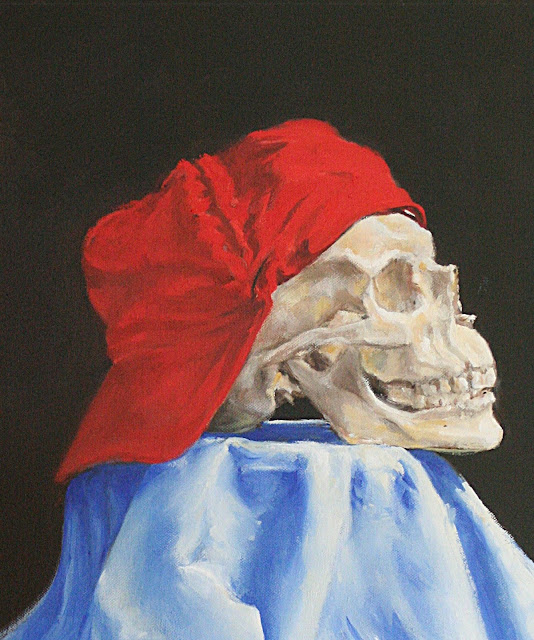Outside the studio window, snow is falling hard and the ground is white. Days and nights are dark and cold, and the end of the year is almost at hand. Reflections on the year behind us and the one ahead are usual here in the dregs of the year.
The first few months of 2020 were deceptive and calm here on Druid Hill Creek. January through March (and the onset of pandemic) kept me busy with metalpoint drawing, watercolors of the creek, and digital paintings of endangered species. Two of the endangered species paintings went on to be exhibited in a virtual show benefiting a great ape sanctuary.
 |
| "Red Wolf," digital painting |
 |
| Winter on Druid Hill Creek, silverpoint, 2020 |
By March, as the pandemic swept into the United States from Asia and Europe, as the numbers of infected and ill patients began to overwhelm hospitals and health workers in New York and the east, my digital work began to deal with events. A series of drawings of people in the pandemic, particularly nurses and physicians, was the result. At the time we hadn't begun to see the emergency that faces the nation now, but it was horrible enough to cause lockdowns, mask mandates, and more that we have dealt with over the ensuing nine months or so. My own response was to keep working but at a distance from others. Starting that month began a long series of plein air oil paintings devoted to nearby landscapes. In the spring summer and fall months much of my time was spent painting at Gray's Lake Park and along the Raccoon River. Eventually these works formed the core of a virtual exhibition A Season in the Sun, of plein air works (which is still running).
Although the watchword since the beginning of the pandemic has been isolation or social distancing, on a few occasions I did manage a sketching excursion or two in autumn with the Saturday Sketch Group, but mostly 2020 was an exceptionally solitary year for this painter.
 |
| "Along the Raccoon," oil on panel, June 2020 |
 |
| "The Point at Gray's Lake," oil on panel, October 2020 |
Besides oil paintings, I also did watercolors outdoors, both with the Sketch Group and solo.
 |
| "Downstream," watercolor |
Next year, if the pandemic eases (fingers crossed), my plan is to spend more time with other painters and with people in general.












